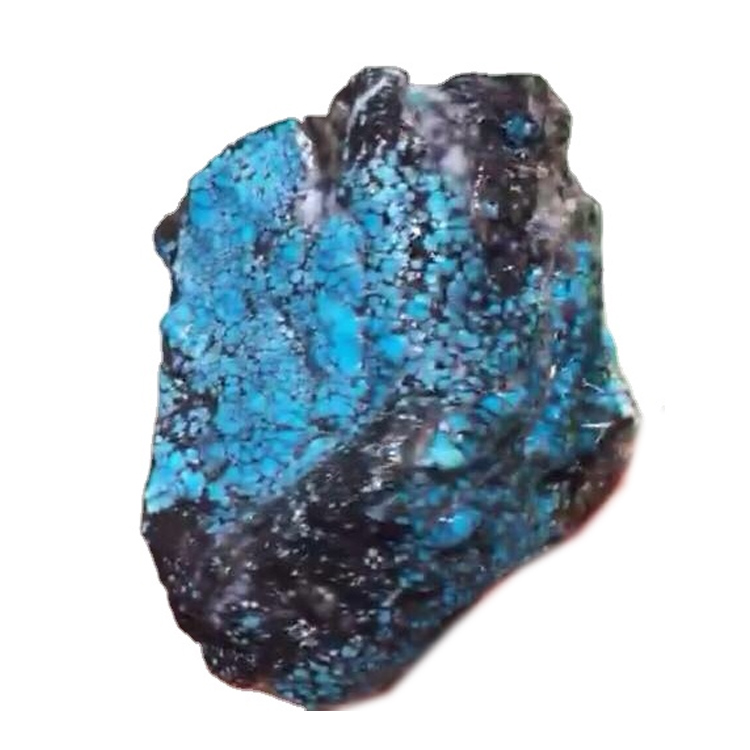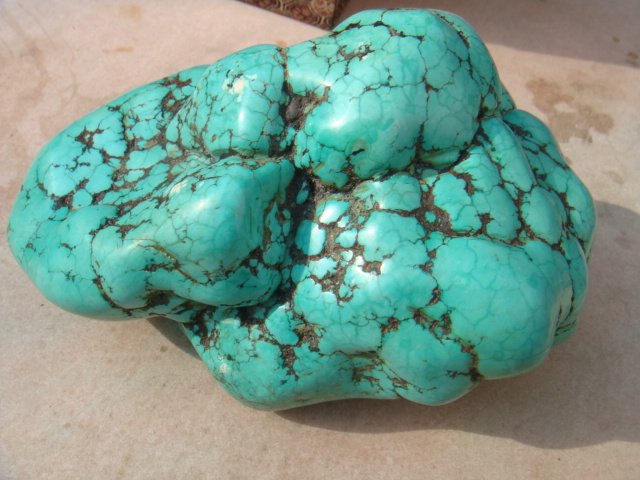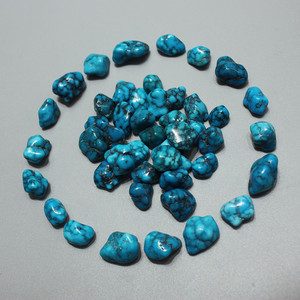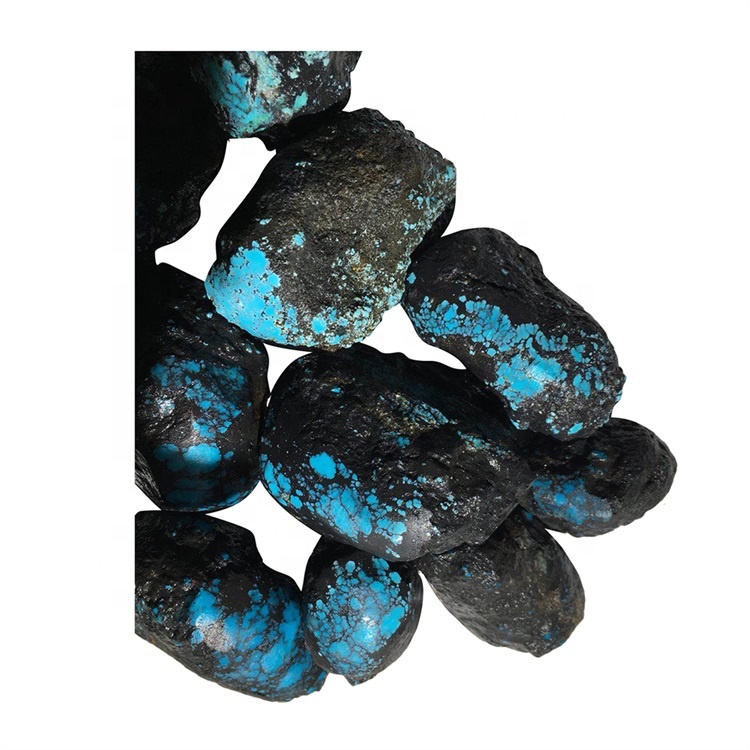Do you really understand turquoise?
Do you really understand turquoise?
Turquoise, also known as "turquoise", gets its name because it "looks like a pine ball and is nearly turquoise in color". The English name Turquoise means Turquoise. Turkey does not produce turquoise. According to legend, turquoise produced in ancient Persia was named after being transported into Europe through Turkey.
Turquoise reserves are huge, not only in China, but also in Egypt, Iran, the United States, Russia, Chile, Australia, Peru, South Africa, India, Pakistan, Kexmir and so on. "Shi Ya" explains: "(Turquoise) is shaped like a pine ball, and the color is close to turquoise, so it is named after it"

Before the Qing Dynasty in China, turquoise was also called "Dianzi". Light and elegant in color, gorgeous turquoise is a traditional jade that has been loved by people at home and abroad in ancient and modern times. It has been worn and used for more than 5,000 years. In Western countries such as the United States, people regard turquoise as a holy object to suppress demons, ward off evil spirits, and a symbol of auspiciousness and happiness. Turquoise is also the birthstone of December in the Western calendar.
he texture of turquoise is not very uniform, the color is dark or light, and even contains light stripes, spots, and brown-black iron lines. There is also a big difference in the degree of compaction, with more pores being loose, and less being dense and hard. After polishing, it has a soft glass luster to waxy luster. High-quality products look like glazed porcelain after polishing, so they are called "porcelain turquoise." Turquoise also has disadvantages, that is, turquoise is easy to fade when heated, and it is also susceptible to corrosion and discoloration by strong acid. In addition
the lower the hardness of the turquoise, the more developed the pores and the more water-absorbent and fragile defects. Therefore, oil stains, stains, sweat stains, cosmetics, tea, rust, etc. may enter the pores and cause the color change that is difficult to remove, so the mosaic The turquoise used is generally treated with sealing wax. Turquoise is a relatively delicate jade variety. Regardless of the processing process, or the use process, all need to be cherished. But as long as it is kept clean and free from high temperature and strong impact, there should be no problem.

SUBTITLE
The international gem community classifies turquoise: turquoise is usually classified according to its origin, color, luster, texture, structure and structure[9]
(1) The first grade turquoise is the turquoise of Persian origin;
(2) The second turquoise grade is the American grade;
(3) The third grade of turquoise is Egyptian turquoise;
(4) The fourth grade turquoise grade is Afghanistan, and the turquoise of Afghanistan is the worst turquoise of the international standard.
domestic
According to color, luster, texture and blockiness, the Chinese arts and crafts circles generally divide turquoise into three grades:
(1) First-grade turquoise: bright sky blue, pure and uniform color, strong luster, translucent to slightly transparent, with a glassy surface. The texture is dense, delicate, tough, without iron lines or other defects, and large in size;
(2) Second grade turquoise: dark blue, blue-green, emerald green, strong luster, slightly transparent. Tough texture, few iron wires or other defects, medium lumpiness;
(3) Third-grade turquoise: light blue or blue-white, light yellow-green and other colors, poor gloss, relatively rigid texture, obvious iron wire, or more defects such as white brain, tendon, chaff heart, etc., and the size varies .

Turquoise maintenance method
Turquoise, like other items you cherish, needs to be cherished and maintained, otherwise it will change from clean to dirty, from bright to dark, and from new to old during use.
Most turquoise has holes and will absorb hand oil, lip balm, perfume, etc., although in our traditional craftsmanship, a layer of paraffin wax is applied to the turquoise surface to increase the turquoise color and protect it. The role of turquoise, but you should still pay attention to sweat, oil, etc. when wearing it, and avoid excessive contact with cosmetics and skin oils, so as not to damage the gems. Because turquoise has many pores, please avoid using heavy liquid to measure the density when identifying, because tribromomethane and diiodomethane will discolor turquoise. The color of turquoise is delicate, and it is afraid of pollution. Avoid contact with tea, soapy water, oil, rust, alcohol, etc. to prevent discoloration of gemstones from penetrating into the pores.

Turquoise is afraid of high temperatures, so it should not be directly fired or exposed to direct sunlight to avoid fading, cracking, and drying. Long-term exposure to the sun will cause turquoise to crack and fade due to loss of water, and baking at too high a temperature will make the turquoise become brittle and brittle. Some Indian handmade jewelry is exquisitely made, and repairs are expensive. However, the thermal conductivity of silver is very high. When repairing silver jewelry, the temperature is difficult to control, and the turquoise inlaid on it will be broken due to the high temperature. Because those gems are glued to metal materials.
Turquoise is not very hard, so it should be avoided to collide with other hard jewelry or objects when it is worn and stored. Do not put turquoise in an ultrasonic cleaning machine. On the one hand, the porous turquoise will absorb the solution and make itself fade; on the other hand, due to contact with other jewelry during ultrasonic vibration, whether it is porous or dense turquoise surface Be destroyed.

Contact: :AnnaHe
Mobile/Wechat/WhatsApp : +86 13751114848
Contact :JeamChen
Mobile/Wechat/WhatsApp: +86 13425105392
Email: info@TurquoiseChina.com
Company address:
Room 1307 Tower A,Yanlord Dream Center,Longcheng Street, Longgang District, Shenzhen,Guangdong Province,China 518172
See the surprise, please consult our customers.


Become An Insider











































































































